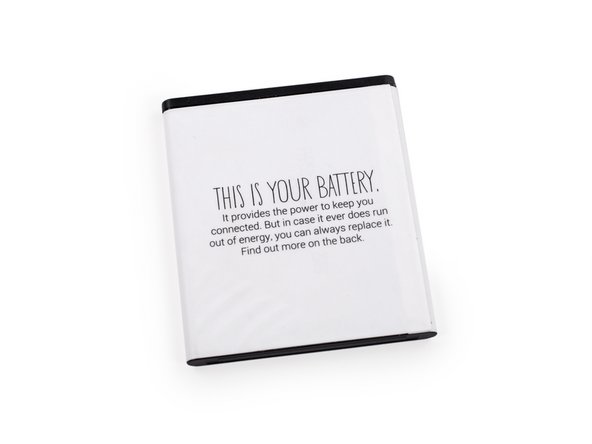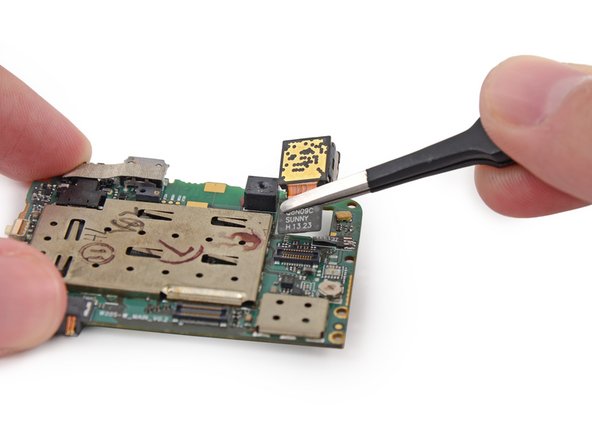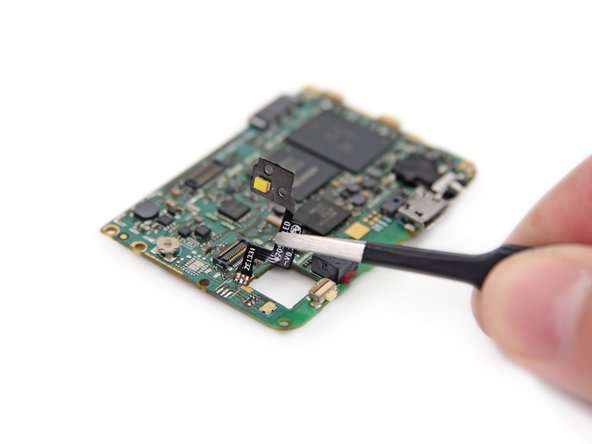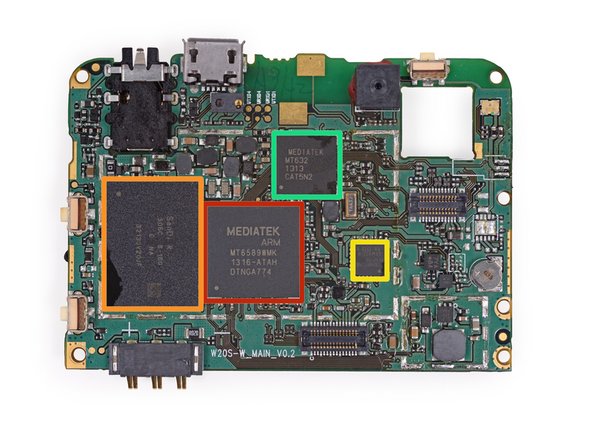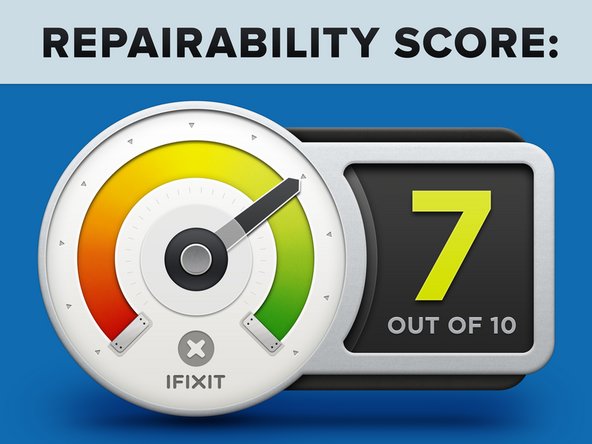Introduction
Fairphone a déclenché de nombreuses discussions dans la communauté de la réparation avec son téléphone équitable. Joignez-vous à nous et découvrons ensemble si leur engagement pour un design pratique, ouvert et durable fera le bonheur des bricoleurs.
Nous avons sournoisement mis la main sur le Fairphone #3. Ce n'est pas une blague ; l'appareil que nous avons démantelé est le troisième prototype du Fairphone sorti tout droit de l'usine ! Il se peut donc que quelques pièces soient encore à l'état brut ou portent des marques que les produits actuellement en vente n'ont pas, mais c'était le prix à payer pour jeter un coup d'œil exclusif à l'intérieur du téléphone.
Vous voulez en savoir plus sur notre propre engagement pour la réparation et la propriété des appareils ? Allez faire un tour sur iFixit.org, ou rejoignez-nous sur Facebook ou Twitter.
Ce dont vous avez besoin
-
-
Avec ses objectifs non conventionnels, le Fairphone ne risque pas d'être le téléphone phare et le plus cool de sa catégorie, mais il reste un smartphone solide qui assure en ce qui concerne ses fonctionnalités :
-
Écran 4,3" Quarter-HD (qHD) (960 x 540 pixels, 256 ppi)
-
Processeur de 1,2 GHz MediaTek MT6589M (quad-core)
-
Stockage extensible intégré de 16 Go par micro SD (jusqu'à 64 Go) + RAM de 1 Go
-
Batterie de 2000 mAh remplaçable par l'utilisateur
-
Caméra arrière 8 MP avec autofocus (stabilisation + capteur d'image) + caméra frontale 1,3 MP
-
Wi-Fi 2,4GHz 802.11b / g / n Wi-Fi et Bluetooth v2.1 + EDR / v3.0 + HS (802.11 AMP) / v4.0 LE
-
-
-
Le cache de la batterie est un peu lourd, sans doute pour mieux protéger la structure et assurer la durabilité.
-
Mise à jour : nous avons eu l'une des unités d'expédition réelles après le démontage et confirmons que l'adhésion du cache de la batterie au reste de téléphone est améliorée.
-
À l'intérieur du cache de la batterie, nous trouvons une dédicace gravée à l'intention des premiers partisans de la vision de Fairphone : "Fairphone doit son existence à ce téléphone, vous et 9635 autres personnes."
-
-
-
La batterie remplaçable par l'utilisateur de 2000 mAh vantée dans la publicité est la première à sortir.
-
À titre de comparaison :
-
L'iPhone 5s est alimenté par une batterie de 1560 mAh et a une autonomie de 250 heures en mode veille.
-
La batterie du Samsung Galaxy S4 de 2600 mAh tient jusqu'à 300 heures en mode veille.
-
-
-
actually, i'm pretty sure you haven't actually *done* this: if you don't remove the five screws that secure the back to the midframe, no amount of prying will get the phone apart (unless you have a ifixit crowbar and decided that you'll want an iphone after all). note: on my phone, one of the screws was initially covered with a black sticker. it's next to where the outer-most SIM appears from under its cover.
(all this on a FP1)
Thank you for writing this Marten - I was struggling and almost breaking the case until I found your "hidden screw" tip. Many thanks
Jo -
WTF dude, you forgot to mention the screws! There are 4 visible and one hidden under a sticker. Plus you don't mention not to pry under the power button or the jacks. Here's a REAL guide, with FULL instructions: Remplacement de l'écran complet du Fairphone 1
This is just a first peek at the device, "Teardowns provide a look inside a device and should not be used as disassembly instructions." But thanks for providing users links to our replacement guides. =)
Regardless if this is a teardown or disassembly instructions, mentioning the "snappy opening pick" but not the 5 screws is simply misleading and may cause people to damage their phones.
I don't know why this isn't even worth a small note to avoid this.
Hi gmdode, This is a teardown, it's only a peak inside the device and NOT meant to be followed as disassembly instructions, we have a banner at the top to warn you! Check out one of our eleven replacement guides instead!
-
-
Avec un minimum de doigté, nous sortons la carte mère et la déposons sur la table pour l'admirer.
-
La caméra arrière 8 MP s'enlève très facilement, mais quelques autres composants sont malheureusement soudés en place :
-
Caméra frontale
-
Moteur du vibreur
-
Flash LED
-
Prise Jack
-
Espérons que les versions futures du Fairphone seront plus modulaires et moins chères à réparer.
-
-
-
De l'autre côté :
-
Module de transmission RFMD RF3236 WEDGE (linéaire)
-
AzureWave AW-NH520, probablement similaire au module IC Combo 802.11 b/g/n Wi-Fi, Bluetooth, GPS et FM AW-NH580
-
Émetteur-récepteur RF MediaTek MT6167A
-
Module amplificateur SKY77768-1 SkyHi Skyworks pour WCDMA / HSDPA / HSUPA / HSPA+ / LTE – Band VIII (880–915 MHz)
-
Module amplificateur SKY77761 SkyHi Skyworks pour CDMA / WCDMA / HSDPA / HSUPA / HSPA+ / LTE – Band I (1920–1980 MHz)
-
-
-
Score de réparabilité du Fairphone : 7 sur 10 (10 étant le plus facile à réparer).
-
La batterie peut être remplacée sans aucun outil.
-
Il est très facile d'ouvrir l'appareil et d'accéder aux composants internes.
-
Il n'y a que 8 vis dans l'appareil entier, toutes des vis cruciformes standard #000 (non propriétaires et non inviolables).
-
Le Fairphone est livré avec un set de tutoriels de réparation gratuits open source.
-
Plusieurs petits composants sont soudés à la carte mère, ce qui rend leur réparation difficile (caméra frontale, moteur du vibreur, flash LED et prise Jack).
-
La vitre est collée et à l'écran et au châssis de l'écran, ce qui augmente les coûts de la réparation.
Is it true for fairphones from the production batch, that the glass is fused to display and frame? In one blogpost [1] they put great emphasize on how they decided to have "separated the glass touch panel and the protective touch panel". I thought this meant that glass and display were easy to repair.
[1] Search for "Hardware Development Ordering" on http://www.fairphone.com/2013/06/28/prod...
@FGN That is true, and they want to change it:
"If the glass breaks, the touchpanel will still work in most cases; however, when we ship the display assembly, these two parts are glued together. This is not ideal, so we're looking into it for next generation devices."
Funny people should mention the idea of making boards more modular to upgrade the phone. I am in the early thinking it out stages of designing a phone and tablet line that is 100% user serviceable and highly rugedized.
Things the phone and tablet will not be. silly stupid overly thin. Glass and digitizer will be 1 part and lcd another. Switches charger etc will be connected more old school plastic connector to pins and they will not be blister buttons but micro switches. The cpu ram etc will be the fastest possible with the largest amount possible. I seen that some dev boards have of all things sata controllers. 1tb ssd any one?
while thicker than average by a good bit it will be worth it. As my end game plan for the phone and tablet is gaming emulation and android specific games etc. Ill post more later on as i move along
-
Merci à ces traducteurs :
100%
Ces traducteurs nous aident réparer le monde ! Vous voulez contribuer ?
Commencez à traduire ›
10 commentaires
If the Fairphone manufacturer/producer wants to score 10/10, it should be a world phone useable on any network and be upgradeable to newer technology by just purchasing and installing replacement boards, similar to what can be done with desktop computers which can be upgraded without replacing the whole thing. It should also be able to run various operating systems including Android, Windows 8, etc. and multi-boot into the desired OS (like HTC HD2).
Setting the bar too high there. Yes that would be the absolute perfection in phone design, but we can't even do that with ultrabooks, never mind tablets or even smartphones. Baby steps. Lets get our devices fully repairable before we start upgrading them. And maybe once upgradable phones come out, ifixit will start a new upgradeability rating?
What obsoletes many smartphones (at least in the minds of typical users) is the phone OS. What are the plans to have an OS software upgrade process that does not require the average user to have to root the phone and go through the esoteric process that exists today?
The updater for the Fairphone was kind of ok, just there were no updates. They never moved beyond Android 4.2.2, and now many apps don’t run on the FP1 anymore. I guess a factor was that they chose a mediatek board, and Mediatek is one of the least open source friendly companies out there, so that they could not port the drivers to newer android versions.
Do anyone know the specifications or part number for the 3.5 mm phone jack (headset)?
I have contacted fairphone several times about this issue, but they are either unable to understand my english or are just avoiding to answer the question... :)
No phones I've ever heard of except old feature phones and all of the apple smartphones that are older than the 4 have non-fused glass.
Fused glass makes sense, I've had to replace the LCD on an old iPhone, getting all the dust out is unbelievably frustrating and takes a long time.
Also, if you drop your phone in water, the sealed screen will almost always work, but with the non sealed, Water gets in between the screen and the capacitive overlay, which won't dry (or will take forever to do so) which means that you'll have to separate the two halves of the screen and clean them.
Overall I personally like glued screens, because they simplify repair.
With the side affect of being more expensive in mind, I usually shop on eBay/Amazon for screens
-Alec
What are the specifications of the micro-USB-socket? (type, sizes, ...) ?
I would like to buy one _before_ the start of the teardown.
I don’t know but the micro sd port is soldered onto the motherboard, so replacing it is quite a challenge. In Berlin I found a service store who replaced my broken socket, but after just a month it broke again. My impression is that this has hit literrally thousands of FP1 users. Truly bad design there.
Burt my is a zote n817
Its azten 817





